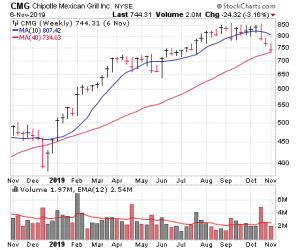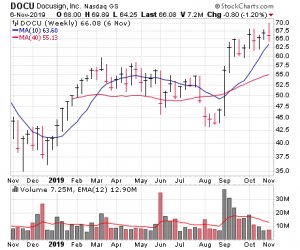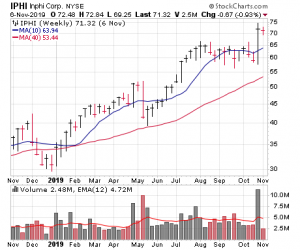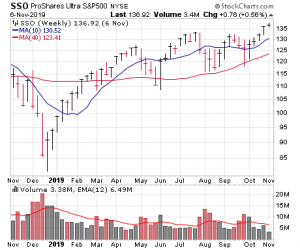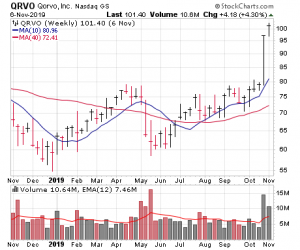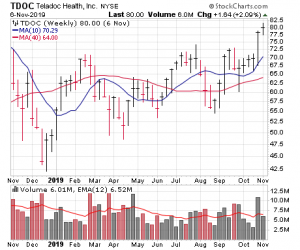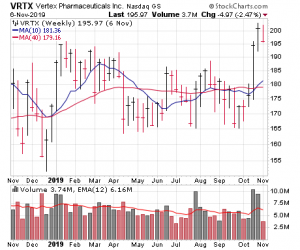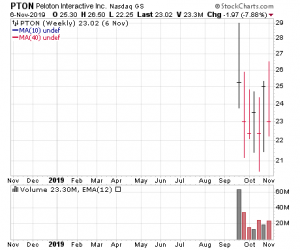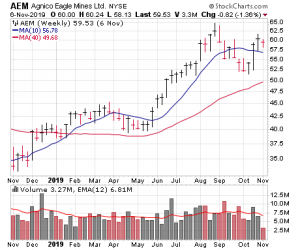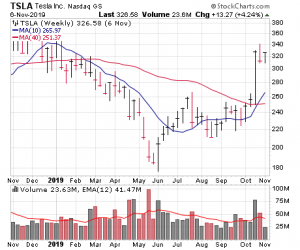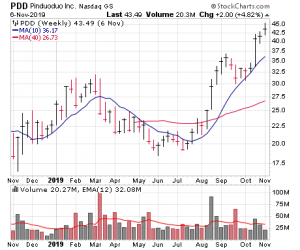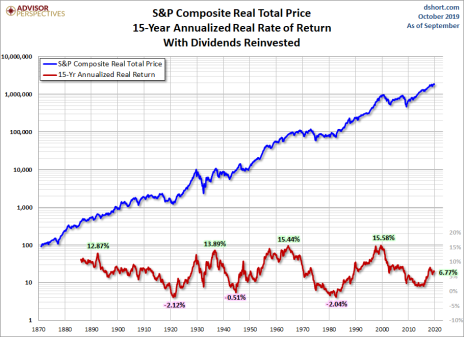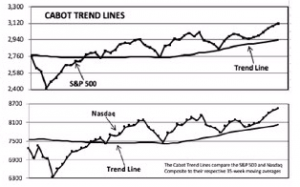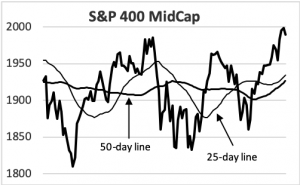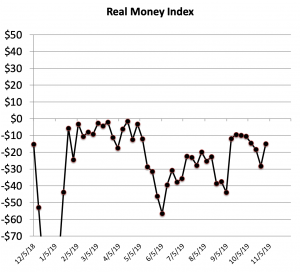We’ve been writing for months that the market’s next big move was likely up, and it now looks like that upmove could be underway, with the major indexes in uptrends, our market timing indicators looking good and little selling pressure recently despite a good run. Short-term, a dip wouldn’t be shocking to see, but the path of least resistance finally appears to be up.
Cabot Growth Investor 1432
[premium_html_toc post_id="190079"]
Market: Great. Growth Stocks: Just OK
Ever since the indexes turned on a dime at the beginning of this year, we’ve been leaning bullish on the general market, and in recent months, even as things have chopped around and there’s been an avalanche of rotation, we’ve continued to think the next big move is up. The longer-term trend (up), big-picture sentiment (awful) and numerous blastoff indicators and studies all pointed in the same direction.
And, while there’s no surety in the market, it’s looking like that upmove might be getting underway—the major indexes have, for the first time in a while, enjoyed a persistent advance (most have hit or are close to new highs), breadth has been great, and while there are a few short-term signs of complacency, we’re putting more weight on the big picture and prior longer-term studies—through June, both stock and bond prices rallied 10% over the prior six months, which is rare; the prior 10 instances sine 1970 saw the S&P rise 11% six months later and 19% a year out.
Thus, near-term shakeouts aside, we’re bullish on the overall market, which is being led by many cyclical areas. (In fact, we’re adding a smidge more to our leveraged long index fund in tonight’s issue.) But what about growth stocks? They’re just OK—not bad, but not great. To be fair, there’s been improvement, and earnings season has seen more good than bad for growth names; we leapt on one breakout last week and are putting more money to work in some recently-strong names tonight.
But for every name that is coming to life, there’s a promising setup that’s falling apart (Shake Shack down 21% on earnings) or an old leader that’s still skidding (Twilio 40% off its peak and below its 200-day line for two full months!). That’s not a bad omen, per se, but as we said to one subscriber this week, we don’t feel we’d be doing any better if we had been heavily invested in recent weeks—probably would have had another winner or two, but also suffered a couple of blowups.
Long story short: We are growing increasingly encouraged by the market, and we are seeing more new leadership emerge, and because of that, we are starting to come off the sideline. But for growth stocks, picking your stocks (and entry points) remains vital given the many eggshells still out there.
What to Do Now
Selectively put some money to work while weeding out weak performers. We did some buying last week (filled out IPHI, started TDOC), and tonight we have a bunch of moves: We’re adding a full-sized position in Vertex Pharmaceuticals (VRTX), a half-sized position in both Qorvo (QRVO) and Dexcom (DXCM) and another 3% to our SSO position. On the sell side, though, we’re dumping Chipotle (CMG), which can’t get out of its own way. All told, these moves will leave us with around 39% in cash.
Model Portfolio Update
We have a green light from our market timing indicators, and so we’re not hesitant to put money to work. But our game plan has been to be “pulled” into new leaders though positive action–mostly breakouts on earnings. As we see them, we’re pulling the trigger; after tonight’s moves, we’ll have added positions in three new names and added to our stakes in two others. That said, we’re still being vigilant with laggards (we’re kicking Chipotle out today) and are going slow overall, with around 44% still in cash after our latest changes.
Current Recommendations
Chipotle Mexican Grill (CMG 737)—It’s been one bad thing after another with CMG during the past three weeks, starting with a poorly-received earnings report, followed by a dud of a report from McDonald’s that hit that stock, with this week bringing a mini-crash in (former) leader Shake Shack and reports that suggest Chipotle’s digital business (which has been one of the keys to growth) is beginning to slow. Throw in the still-tricky environment and CMG has steadily lost ground, falling through our stop today and testing its long-term 40-week moving average. Frankly, we’re not expecting the stock to implode from here, and in fact, a bounce wouldn’t shock us. But after a big run this year, the sector has turned weak and CMG is losing sponsorship, even as some new leadership and the market gets going. Throw in the fact that we don’t want to lose any more of our profit and we’ll take the rest of our profit off the table--we might be a little late (though it’s only 13% off its peak), but including our partial sale in September, we’ll walk away with a 25% or so profit on the entire position. SELL.
DocuSign (DOCU 65)—DOCU has about as clean a growth story as you can get, with a rapid and reliable growth outlook and an early-stage setup on the chart (it just blasted off in early September after a long post-IPO correction). But even it can’t yet escape the endless gyrations and rotation we’re seeing among growth stocks, with shares hitting resistance near 70 this week and quickly backing off a few points. Even so, while the stock isn’t tearing up the charts, it’s etching higher highs (65-68-70) and lows (60-62-64) during the past few weeks despite all the crosscurrents in the market. Of course, there’s always the chance that DOCU fails (we have a mental stop in the upper 50s), but given the story, numbers and chart, we think the stock has as good a chance as any to make a big move over time. If you own some, just sit tight, but if you don’t, we’re OK grabbing some shares around here. Earnings, by the way, aren’t likely out until early December (their quarter just ended on Halloween). BUY.
Inphi (IPHI 71)—IPHI wasn’t exactly inspiring the bulls ahead of earnings, but the stock had done nothing wrong (a reasonable sideways range after a strong long-term breakout) and the Q3 report was a great one, with sales (up 21%) and earnings (up 50%) both topping expectation, allowing management to hike guidance going forward. Beyond the numbers, the best news was the top brass’ general optimism that most trends are in its favor—Amazon appears ready to open its wallet to upgrade its data centers (likely using Inphi’s products), with Alibaba and some others to follow suit in 2020; demand for the firm’s data center interconnect system should get a boost from Microsoft’s recent massive deal with the Department of Defense; and its platform that speeds the trans-mission of data over fiber is earning some solid wins among Tier-1 and Tier-2 carriers. In response to the positives, IPHI gapped out of its base on excellent volume, and while shares have backed off a bit since (most growth stocks that have shown strength have done the same), it’s nothing out of the ordinary. We filled out our position following the gap and are sticking with our Buy rating today. BUY.
ProShares Ultra S&P 500 Fund (SSO 138)—In the short term, we’re seeing a couple of yellow flags for the market; put-call ratios have fallen through the floor (a sign of complacency) and the indexes are stretched to the upside, both of which could tell us a pullback is due. But, while we’re not ignoring that, focusing on the near-term misses the forest for the trees—we’ve long thought the market’s next major move was up due to sentiment, the positive long-term trend and various studies from earlier this year, and we think there’s a good chance that move has now begun. Of course, there’s always a chance that the market has yet another tedious pullback (it’s already had three since the start of May), so if you already own a normal-sized chunk of SSO, there’s nothing wrong with sitting tight. But given that we think the market has a chance of surprising on the upside in the weeks and months to come, we’re going to emphasize the positive by adding a bit more to our SSO position—specifically, adding 3% of the portfolio to our current stake (if you have a $100,000 portfolio, buy another $3,000 of SSO). If you don’t own any, you can start a position here. BUY.
Qorvo (QRVO 101)— The 5G boom has been more hype than reality for much of the past year, but we’re now beginning to see a few names related to that theme flex their muscles. One area that’s particularly strong are select chip stocks that are set to directly benefit from the wave of 5G smartphones that will hit the market in the quarters ahead. (One analyst sees 200 million 5G smartphones sold in 2020 and another 450 million in 2021, and a couple companies think those estimates are conservative.) Qorvo looks like one of the leaders in that field, with a variety of key technology (especially its radio frequency (RF) systems) that’s being integrated into these new 5G phones for some big outfits (Apple, Samsung, Huawei and others), and all indications point to leaders like Qorvo keeping and even expanding their market share as the 5G wave commences. Indeed, the firm’s Q3 report was an eye opener—while sales (down 9%) and earnings (down 13%) fell from a year ago, both crushed expectations, and management’s outlook suggests next year could see the bottom line up 25% to 30%, and even that could prove conservative. The stock went ballistic on the report, galloping out of a four-year base on enormous volume. There are risks here (it does a lot of business in China, for instance), but it certainly seems like the firm is just at the beginning of what should be an exciting growth wave. We’re adding a half-sized position (5% of the portfolio) here. BUY A HALF.
Teladoc (TDOC 80)—We had a fling with TDOC in September but got whipped out of it due to what turned out to be superficial bad news (and a big round of rotation out of growth stocks), but the stock quickly shaped up, put the finishing touches on a nine-month base and broke out following a solid Q3 report last week—not only did sales (up 24%) top estimates and visit growth accelerate (up 45%), but the firm added a whopping 17 million new members (subscribers and pay-per-visit), thanks mostly to their deal with UnitedHealth, which brought along 15 million of those. (Engagement efforts are already up and running to boost usage.) Management said the 2020 pipeline looks robust, highlighted some moves overseas (in the U.K. and Canada specifically) that have met with success and said it’s beginning to ink some wins to offer telehealth services to Medicare Advantage plans. The bottom line is still deep in the red, but EBITDA is positive and should expand quickly from here, and there’s no question that the long-term outlook is extremely bright as Teladoc expands its offerings of telehealth services across the globe. We started with a half-sized (5% of the portfolio) position last week, and the stock, which has pulled back, still looks fine. You can buy a little here if you’re not yet in. BUY A HALF.
Vertex Pharmaceuticals (VRTX 196)—We had VRTX on our watch list way back in mid 2017 as the stock was storming ahead, the company was positing massive growth thanks to its cystic fibrosis (CF) treatments and the pipeline was chock-full of future opportunities. But we never bought it, the stock stalled out, and as of a month ago, it was at the same level! But now VRTX appears ready to move, with the catalyst being an early approval (five months ahead of schedule) of the firm’s new triple-combination treatment for CF that will greatly expand the number of patients Vertex can treat. Because of that (and a higher-than-expected price tag), analysts see earnings basically doubling from this year to 2021! The stock ripped to new highs on big volume after that news and held those gains following its Q3 report; while there could be round number resistance at 200, we think the risk-reward of buying around here (a 10% to 12% loss limit should be plenty) is attractive. VRTX isn’t going to double in a month or two, but we think it has the makings of a liquid leader after a long rest period. We’re adding a full position (10% of the portfolio) tonight. BUY.
Watch List
- Dexcom (DXCM 195): After a long time in the wilderness, DXCM stormed to new highs today after a blowout earnings report. Growth trends for its G6 continuous glucose monitoring (CGM) system continue to impress.
- Five Below (FIVE 130): The setup (14-month rest) and story (still a long runway of growth and possible easing of tariff pressure) are there, but now we need to see a decisive show of strength to conclude the trend has turned up.
- MasTec (MTZ 71): MTZ had a great shakeout ahead of earnings and has boomed back to new highs following the report. The trick here is tame expected growth in 2020, though we’re thinking that could prove conservative.
- Pinduoduo (PDD 43): PDD looks like a glamour leader of this advance. See more later in this issue. Earnings are due out November 20.
- Tesla (TSLA 336): Tesla might be turning the corner after years of poor execution. See more later in this issue.
Other Stocks of Interest
Pelaton (PTON 23)—Just about every IPO from earlier this year has struggled, and PTON is no exception, with shares languishing in a post-IPO base. But we think the company has enormous potential to disrupt the fitness industry with an innovative offering—the firm’s stationary bikes and treadmills are well made (and go for a high price), but the difference here is the connectedness of the products, with each having a large screen that can broadcast numerous live (or recorded) workouts (it has 81 showrooms around the world now). It’s like being in a gym with an instructor and getting a great workout—but from your own home! Pelaton makes money both from the products (a bike will run you more than two grand) and a monthly subscription ($40 a month or so), but despite the price tag it’s been a hit, with 562,000 paying users at the end of September and with most who sign up sticking around (94% retention rate over the past year). Revenues are growing at triple-digit rates (though that will slow some), and as the company expands internationally and into the middle-tier of the market (it’s offering a 30-day money-back guarantee, with the firm setting it up for you and taking it back if you don’t like it), there’s no reason Pelaton can’t grow its subscriber base many-fold from here. The stock probably needs more seasoning, especially with growth stocks still touch and go, but PTON is a name worth following—we think it can be a new brand name in the fitness industry and be a leader down the road.
Agnico Eagle Mines (AEM 58)—OK, OK, we’re never going to be gold bugs; the stocks can (and usually do) get pushed and pulled by factors outside of their control. But when a stock meets our screens for current and projected growth, has shown rare clues on its chart of institutional accumulation and has recently etched a nice-looking launching pad, we pay attention regardless of the sector. Agnico Eagle Mines will obviously be dependent on the price of gold, but we like that the company has a lot going for it—after a huge spending wave in 2017 and 2018, CapEx is tapering off while some new mines come on line, which should help production move higher (up 10%-ish next year). And combined with elevated gold prices, Agnico’s earnings have surged the past two quarters and analysts see more of that going forward ($0.97 per share expected this year, rising to $1.88 per share in 2020). Just as important is the chart, which bodes well—AEM got going with the rest of its peers in early June and rallied 13 weeks in a row to multi-year highs by August. After a reasonable seven-week retreat, shares found buyers after earnings and aren’t that far from virgin turf. As far as gold stocks go, AEM looks like one of the best.
Tesla (TSLA 336)—We haven’t loved Tesla for a long time, but we always try to keep an open mind, and the fact is that TSLA has the looks of a high-potential turnaround situation. Despite worries over competition, the issue here hasn’t really been about demand—whether it’s the Model S or X a few years back or the Model 3 today, the firm is selling as many vehicles as it can produce, with trailing 12-month deliveries ramping from 125,000 in mid 2018 to nearly 350,000 in Q3 of this year. The problem has been that increased production has led to a stream of disappointing bottom-line results; throw in some issues from the top brass (“funding secured!”) and the stock fell 55% from its high and hadn’t made any net progress in five years. So what’s changed? First, operations have improved—free cash flow has been solidly positive each of the past two quarters and, while there are no sure things, more of the same is expected going forward (analysts see earnings of $5.33 per share in 2020, up from a loss this year) as costs remain in check. And second, the firm is ahead of schedule in testing its new Model Y (crossover utility electric vehicle, planned launch next summer), while the company’s new Shanghai production facility is in pre-production for the Model 3. Given Tesla’s snafus over the years, many investors are skeptical (37.1 million shares are sold short, equal to about 28% of the float), but despite that (or partly because of it), the stock has developed positive momentum (intermediate-term uptrend) for the first time since June 2017. We’re not willing to jump in now, as there’s a ton of overhead still to chew through, but we’re writing it up because the setup is intriguing—if the top brass can get its act together (admittedly a big if), TSLA may enjoy a surprising, sustained advance. It’s worth keeping an eye on.
China Stocks Looking Ready to Move
China has been a four-letter word during the past couple of years, and while we won’t opine on whether that’s good or bad in the real world, it’s likely going to present some good opportunities for investors once perception improves. And there’s growing evidence that time has arrived.
Our favorite measure of Chinese stocks is the Golden Dragon Fund (PGJ), which tracks all U.S.-traded Chinese stocks (as opposed to measuring how shares are trading overseas). It got nailed last year and has lagged in 2019, but the fund has found consistent support in recent months and has entered an intermediate-term uptrend. And not surprisingly, many individual stocks are showing strength: ZTO Express (ZTO), which looks a lot like the FedEx of China, is standing near the top of a year-long consolidation; New Oriental Education (EDU), which is one of two big boys in the for-profit education business in China, recently popped to new highs after an initial post-earnings wobble; and JD.com (JD), which is one of the largest e-commerce players in the country, shot to 14-month highs this week on solid volume. All of these (and others) look solid.
That said, our favorite Chinese-related name is one we wrote about a month and a half ago—Pinduoduo (PDD) isn’t as well known as many big players (that’s a good thing), and it’s a leader in a new industry (dubbed social commerce) that encourages team shopping; the more that buy, the lower the price of the product. Overall, it has the feel of an online, new-age Costco, but instead of bulk purchases by individuals and required memberships, Pinduoduo gets scale via word of mouth as users look to expand their teams and cut their costs!
The concept has been a hit in both big cities and smaller locales, with jaw-dropping growth (revenues up 160% in Q2), awesome sub-metrics (spending per user grew 92% last quarter!) and the expectations of profits next year. Even better, this liquid title ($250 million of volume per day) was one of the first to leap to new highs (two weeks ago) in the current upmove.
The trick here is that earnings are coming up (November 20) and the stock is extended to the upside, not to mention reports that the Chinese government could discipline them for some reason. Even so, we’re looking for an entry point, thinking a shakeout of a couple of points could provide an opportunity. WATCH.
Is the Market Really Late-Stage?
We wanted to write a quick note based on a lot of what we’re hearing and reading these days—that the market is “obviously” in the latter stages of the bull market, given that it (supposedly) began 10 years ago and that (so the story goes) the economy is also teetering on a recession. But if you take a step back, you’ll see it’s nowhere close to the overheated stage many believe.
Shown here (courtesy of Advisor Perspectives at www.dshort.com) is a very long-term chart of the 15-year annualized real (after inflation) return of the S&P 500. If you look way back at the market’s peak in the 1930s, the 15-year annualized real return was in the 13% to 14% range. At the mid/late 1960s peak, it was up in the 14% to 16% area. And it was a similar story at the 2000 bubble top, with the S&P cranking ahead a sterling 15%-ish annually for the prior 15 years.
What about today? That figure is just around 7% annualized, which is nothing to sneeze at but certainly not what we’ve seen at major market tops throughout history. In our view, after making no net progress for 13 years, the market began a new secular (very long-term) advance in 2013, and these secular moves usually run from 10 to 20 years. Throw in tepid man-on-the-street sentiment (not something seen near major tops) and the odds favor the market being in the middle innings of this big-picture run. Obviously, this has nothing to do with the here and now, and the future isn’t written in stone –we’ll never rule out any scenario going forward. But the above evidence is something to keep in the back of your mind when you come across the various doomsday forecasts that are out there; most of the evidence actually points toward nicely higher prices in general over the next few years.
Cabot Market Timing Indicators
The overall environment has improved, with our two trend-following indicators now clearly positive and a few more leading growth stocks emerging. We’re optimistic a sustained uptrend is getting underway, though with so many crosscurrents we’re still picking our spots.
Cabot Trend Lines: Bullish
It’s been a tedious few months, but our Cabot Trend Lines have remained positive throughout, telling us the next big move was likely up. And now the market’s two main indexes are beginning to stretch their legs—both the S&P 500 and Nasdaq closed last week a bit more than 5% above their respective 35-week moving averages, which keeps the longer-term trend pointed firmly up.
Cabot Tides: Bullish
Our Cabot Tides are also in good shape—not only are all five indexes we track (including the S&P 400 MidCap, shown here) above their lower (50-day) moving averages, but the big-cap indexes have finally nosed to new highs while the other ones (like the S&P 400) are closing in. Long story short, while it’s not a runaway bull market, the intermediate and longer-term trends are both pointed up, which tells us to put some money to work.
Cabot Real Money Index: Neutral
Short-term, we have seen a few signs that investors are getting complacent, so pullbacks and shakeouts are possible. But bigger picture there remains plenty of skepticism: Our Real Money Index has moved back into neutral territory, but a look at the chart will show the five-week average of money flowing to equity funds and ETFs has been negative all year, a strong sign that there’s plenty of money on the sideline.
Charts courtesy of StockCharts.com
The next Cabot Growth Investor issue will be published on November 21, 2019.
Cabot Wealth Network
Publishing independent investment advice since 1970.
CEO & Chief Investment Strategist: Timothy Lutts
President & Publisher: Ed Coburn
176 North Street, PO Box 2049, Salem, MA 01970 USA
800-326-8826 | support@cabotwealth.com | CabotWealth.com
Copyright © 2019. All rights reserved. Copying or electronic transmission of this information is a violation of copyright law. For the protection of our subscribers, copyright violations will result in immediate termination of all subscriptions without refund. No Conflicts: Cabot Wealth Network exists to serve you, our readers. We derive 100% of our revenue, or close to it, from selling subscriptions to its publications. Neither Cabot Wealth Network nor our employees are compensated in any way by the companies whose stocks we recommend or providers of associated financial services. Disclaimer: Sources of information are believed to be reliable but they are not guaranteed to be complete or error-free. Recommendations, opinions or suggestions are given with the understanding that subscribers acting on information assume all risks involved. Buy/Sell Recommendations: All recommendations are made in regular issues or email alerts or updates and posted on the private subscriber web page. Performance: The performance of this portfolio is determined using the midpoint of the high and low on the day following the recommendation. Cabot’s policy is to sell any stock that shows a loss of 20% in a bull market or 15% in a bear market from the original purchase price, calculated using the current closing price. Subscribers should apply loss limits based on their own personal purchase prices.

